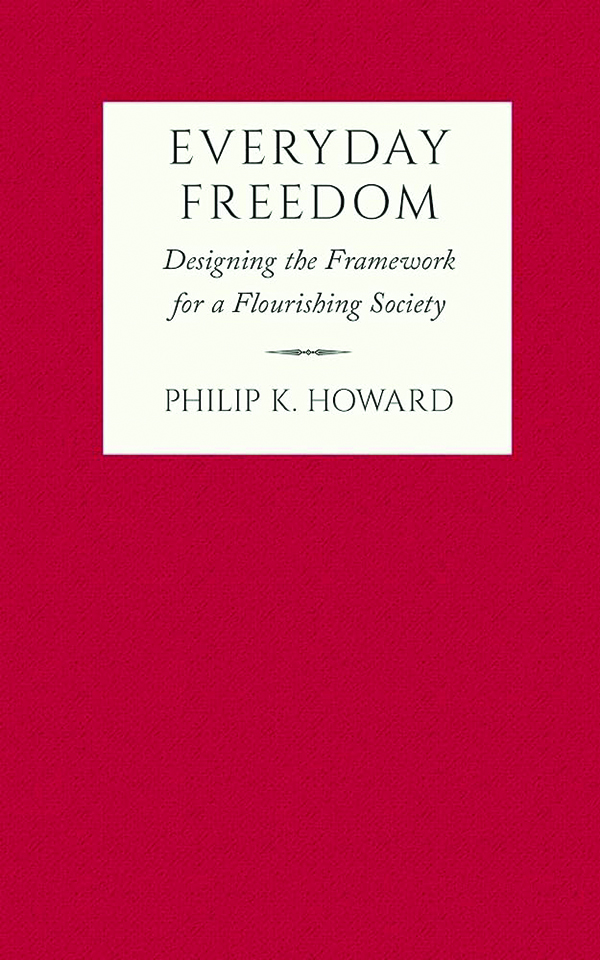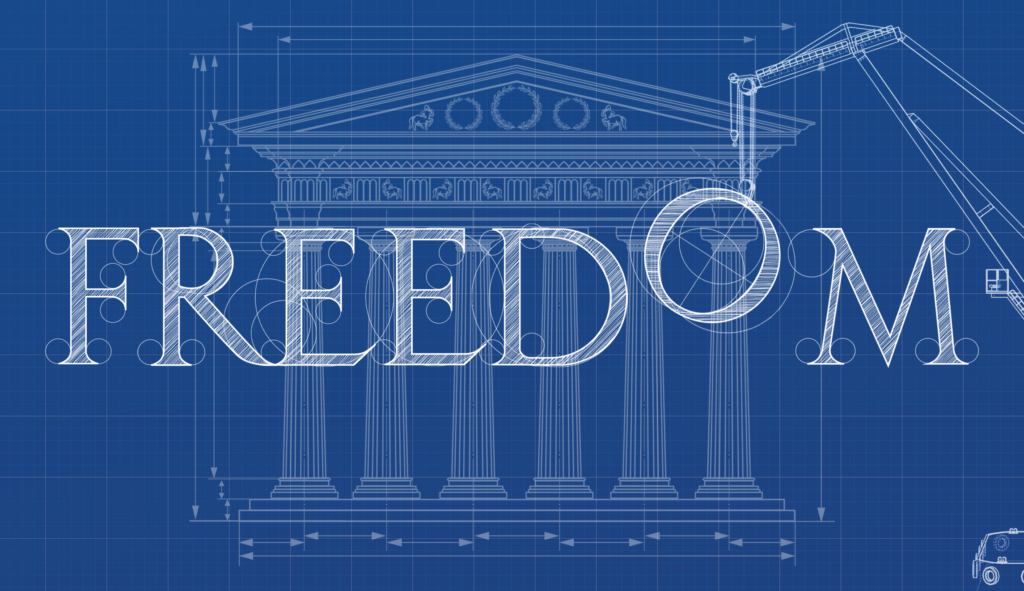America’s on-the-ground decision-makers have their hands tied. Teachers lack the authority to run their classrooms, and their superintendents lack the authority to manage them. It takes forever to build anything, thanks to interminable permit requirements and special-interest objections. Doctors are exhausted from never-ending administrative burdens and the threat of lawsuits. People, in general, feel helpless and despondent, whether they’re cowering from the censors in HR or watching their cities descend into anarchy.

This is the picture painted in Philip K. Howard’s Everyday Freedom, a fusillade against the current state of law. Howard believes these actors need greater authority to use their own judgment, coupled with norms of reasonableness and subject to oversight through clear lines of authority, to solve problems — and that this type of freedom, which he dubs “everyday freedom” or the “freedom to do what’s right,” has disappeared as individual rights, written regulations, and legal liability have expanded.
The change began in the 1960s, when “the social and legal institutions of America were remade to try to eliminate unfair choices by people in positions of responsibility,” rooted in a growing distrust of authority and a desire to confront very real abuses of power. One effect of this shift, alas, was to suppress basic judgment and common sense, replacing them with rules so detailed no one could possibly learn them all and demands for officials to justify each decision they made, with lawsuits from private parties waiting in the wings.
This led to a sense of alienation. Human beings thrive when they draw on their intuitions and talents to solve problems, and the new system discourages exactly that. It also led to massive inefficiency, dysfunction, and distrust as people in what should be positions of power shied away from doing their duties, focusing instead on compliance and lawsuit avoidance. Think “defensive medicine,” in which doctors conduct extra tests not because they think the tests are worthwhile but because doing so might shield them from liability.
How does Howard want things to run instead — how would we restore everyday freedom in concrete terms? A few elements of his vision become clear over the course of the book.
For example, Howard outlines his ideal legal structure: The law should end its obsession with “precise dictates, objective proof in legal proceedings, and satisfying individual rights as a litmus test.” Instead, it should “safeguard against unreasonable acts” but should do so using broad principles rather than detailed rules whenever possible. It should provide “clear lines of authority” regarding who interprets and applies these guidelines. And it should protect “an open field of freedom on which people can interact without fear of abuse or legal ramifications.” He also has positive words for society’s mediating institutions: “Government should delegate services and provide resources to credible local groups, and provide block grants conditioned on performance.”

Some devils lurk in the details, and many readers will wish Howard simply provided more details about how it’s all supposed to work, given he is proposing a total overhaul of the law.
Start with individual rights. Howard hardly wants to do away with the entire concept. He praises the First, Fourth, and Fifth Amendments, seeing them as good examples of broad principles that have been defined case by case, through sensible judicial decisions, over the years.
Yet in arguing that “too much process” harms law enforcement, he also bemoans the fact that “requiring cops to demonstrate probable cause by objective facts has bred the cynical practice of ‘testilying’ — when police make up some fact that will justify the stop.” That line furrowed this conservative’s brow and would probably give a civil libertarian an aneurysm.
Technically, only reasonable suspicion is required for police to stop someone (and, if the person may be armed and dangerous, perform a cursory “frisk”), while probable cause is required for searches and arrests. But beyond that bit of nitpicking, how would one decide whether the Constitution’s protections against unreasonable search and seizure, as well as its probable-cause requirement for search and arrest warrants, had been violated without asking what objective facts the officer’s actions were based on? If an officer has the “everyday freedom” to stop (or frisk or search or arrest) people and simply claim he had a hunch afterward, these protections mean very little. And the fact that some officers lie under oath is hardly a reason to relax the rules governing their conduct. Courts may sometimes be too strict (or too lax) in their demands of police officers, but the problem is not judges’ insistence on attempting to establish facts.
Also worth engaging with is Howard’s treatment of juries. One might think juries are a perfect example of common sense applied to law and that they should be given more authority to “do what’s right.” But, of course, allowing frivolous lawsuits to go to juries is exactly what caused the liability aspect of the problem. As Howard writes, jury verdicts “make no rulings and set no precedent, so today no one has any sense of the boundaries of unreasonable behavior. In one case, the jury may find no liability. In a similar case, another jury may find liability. There’s no legal boundary people can rely upon.” In this case, judges are the ones who need everyday freedom to act as gatekeepers against frivolous suits and must collectively establish some universal, written rules in the form of precedent for clarity and predictability.
Meanwhile, broad principles, enforced locally and case by case, can come at the expense of clarity and the ability to predict whether one’s actions will be deemed illegal or otherwise out of bounds. Howard presents this as a feature rather than a bug: “The uncertainty inherent in principles-based law drives most people to act in the middle lane of accepted norms.” But isn’t that similar, in a way, to the paralysis the current system engenders by demanding too much detail? At one extreme, there are a million little rules, and enforcers can arbitrarily choose which rules to enforce against whom. At the other, there are a few vague rules, and the enforcers can arbitrarily choose how to interpret them.
The right balance among individual rights, rules and processes to reduce arbitrary variation among decision-makers, and competent and flexible on-the-ground decision-making and supervising will obviously vary from situation to situation. Howard, while forcefully arguing we need to prioritize flexibility far more than we currently do, provides some important distinctions we might lean on in making these judgment calls.
Formal processes can sometimes help inform decision-making, he says, but they should generally be avoided as a way of forcing decision-makers to justify their actions. Citing the work of Brenda Zimmerman, he also says that rules and checklists are good for “complicated” activities with lots of steps to follow but not so much for “complex” ones for which highly trained workers rely on heavy doses of muscle memory, craft, and intuition. (Surgery, for instance, combines the two. Checklists can make sure everyone’s hands are washed and that the correct limb is marked for amputation, but good surgeons then mentally “disappear” into the task.)
CLICK HERE TO READ MORE FROM THE WASHINGTON EXAMINER
To translate these assorted high-level conclusions into actual reform, however, Howard says the “only practical mechanism for designing new frameworks is for Congress to delegate the design of structures, area by area, to independent recodification commissions.”
The high level of generality can make the book feel a bit unsatisfying. Readers are left convinced that red tape and bureaucracy have gotten out of control, if they needed convincing, and having a better grasp of the problem’s underlying dynamics. But ironically, they might close the book, wishing they’d received more in the way of precise dictates, as opposed to broad principles.
Robert VerBruggen is a fellow at the Manhattan Institute.
